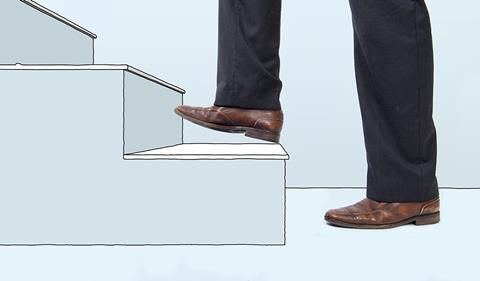Better patient protection can be delivered by strengthening processes and changing an organisation’s culture. Bita Manzouri and colleagues explain how

The seven steps to safety
Maintenance of safety in clinical practice is based on a system of agreed policies and procedures, compliant with national requirements but locally applicable; a structure of risk management; and, most of all, strict attention to detail and careful consideration of safety by all staff in their daily duties.
Risk management, one of the fundamental pillars of clinical governance, establishes robust systems to identify, monitor and minimise the risks to patients and staff as well as learn from mistakes and near misses. However, the Francis report demonstrates that even well established formal systems and regulation do not guarantee the prevention of serious harm.
‘Clinical and non-clinical staff should feel safe reporting errors and adverse events’
The NHS is now engaged in some serious soul searching, in the hope that strengthening of processes and a change in culture can deliver better patient protection in the future. It is inevitable that occasionally things will go wrong in the delivery of care.
The promotion of a fair blame culture, to encourage the reporting of problems and promote learning from them, is crucial: clinical and non-clinical staff should feel safe reporting errors and adverse events, and should be in an environment where they are able to share, learn and improve when things go wrong. Poor performance should, however, also be tackled robustly. To do this, it needs to be clear what constitutes inadequate and unsafe actions.

Recurring issues
At Moorfields Eye Hospital, we have undertaken a review of serious incidents and “never events” that have occurred in the trust over the last three years. Analysis of these incidents, and of complaints, revealed that the same issues kept recurring: factors such as consent (incomplete consent forms, inadequate consenting discussions with patients); communication (poor explanations to patients, lack of adequate handovers, incorrect identification of patient in clinics); documentation (illegible or incomplete medical note writing, writing the wrong notes, incorrect intraocular medical device inserted); and diagnostic procedures (failure to ensure that investigations are ordered correctly and that results are reviewed and acted on). A significant number also involved medical staff in training.
This is even more challenging for trainee doctors, who change hospitals and firms regularly.
Tackling incidents
In an attempt to address this, a short, succinct document was compiled that contained the key messages for patient safety and the prevention of serious harm, as highlighted by our own incidents and described in our patient safety procedures. This document is called INCCDNTS: The seven steps to safety.
Seven steps to patient safety
- Incidents
- Consent
- Communication
- Documentation
- Never events
- Tests
- Safety and seeking help

Incidents
If there is a patient safety issue, such as an incorrect, delayed or missed diagnosis, you are responsible for completing a clinical incident form and recording it in the notes. You must also inform the consultant or most senior available clinician, tell the patient and apologise (this is not an admission of liability but an expression of sympathy that things have not gone well). You must record that you have done all this and summarise any other discussions with the patient, in the notes.
Consent
Poor consenting is one of the most common causes of dissatisfaction and complaints/claims around surgery. To avoid them:
- Ensure the patient understands the diagnosis, the risks and benefits of surgery, the option not to have surgery or have another less invasive therapy.
- Ensure they understand the risk of less serious complications.
- Ensure that expectations are managed properly.
- Record either in the notes or on the consent form what you have told the patient and their family.
- Complete the form fully, including which leaflet (always give a leaflet if you can) was provided and give a copy of the consent form to the patient on booking the procedure.
- If a patient signs the consent form before the day of surgery, the clinician should confirm again with the patient that they understand the information that they have been given and that they still wish to proceed, and document this by completing the “confirmation of consent” section of the consent form.
Communication
- Communication to patients: Ensure patients understand their diagnosis, prognosis, care plan, investigations and expected time scales for appointments and test results.
- Communication internally: You are responsible for handing over patient care to an appropriate colleague in person or by telephone at the end of your shift. The handover should also be clearly documented in the patient notes along with clinical findings, and a provisional diagnosis/management plan. In weekend clinics and out of hours ensure that investigation results that are not available on the day are reviewed promptly.
- Communication externally: The GP and other clinical teams involved in the patient’s care must be kept informed by letter at every visit (even if to indicate only the diagnosis and no change to therapy), and a copy of the letter provided for the patient.
Documentation
You must write in the notes when you see a patient. This can be brief but, no matter how busy you are, it must be enough; it must be legible; and you must sign and legibly print your name and designation. In general you should document symptoms, key clinical signs, any investigations ordered (these must be listed), treatment given and outcome/time of next visit.
Never event and serious incident prevention
- Mark the side/site for surgery with an indelible pen.
- Use the World Health Organisation checklist for operations.
- Cooperate closely with theatre nursing staff to ensure that swab and instrument counts are correct.
- Have you correctly identified the patient? When you call a patient in outpatients or for a procedure, ask the patient/carer to tell you their name, date of birth and the first line of their address. Many patients will say yes if asked if they are Mr X or Mrs Y if they have poor English, do not listen carefully or just want to be seen quickly. Always check that you are entering information into the correct patient’s paper or electronic records.
- Complete the clinic outcome form correctly and legibly so that clinic clerks can arrange a suitable appointment or discharge the patient.
- Always speak up promptly if you think that an error is about to occur.
Tests
If you order an investigation, especially if it is important or to exclude serious pathology, you are responsible for ensuring the request is received and that the result is checked and actioned. Accurate legible contact details of the requesting clinician, consultant and patient must be included. If you receive a report of an investigation this must be documented in the patient’s notes with an action plan.
Safety and seeking help
If you are unsure on any issue related to patient care, always ask for help. Patient safety is paramount.
If the staff bear these points in mind during their daily interactions with patients, there will be fewer serious incidents and complaints.
Bita Manzouri is locum consultant, Declan Flanagan is medical director and Melanie Hingorani is consultant ophthalmologist at Clinical Director for Quality and Safety at Moorfields Eye Hospital.



























No comments yet